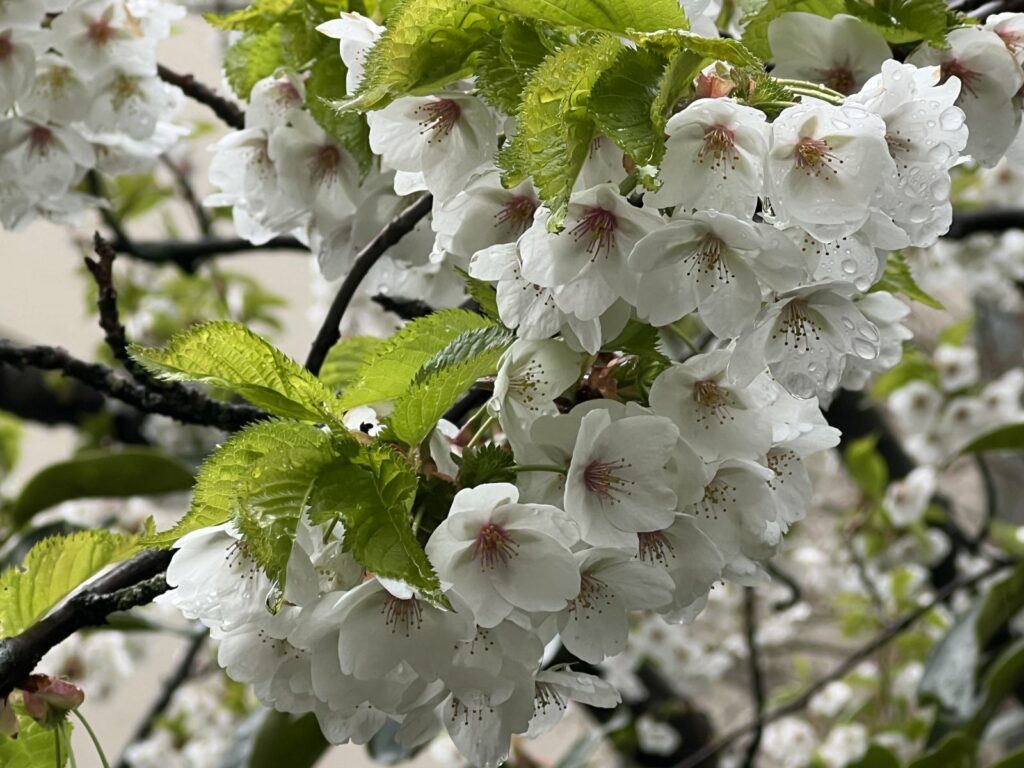March 6, 2024. Even though most of the earliest to bloom ‘Whitcomb’ cherry trees were hard hit by the January freeze, there were some nice-looking blossoms, sparsely distributed on most of the trees. Here is a recent photo from Richmond.
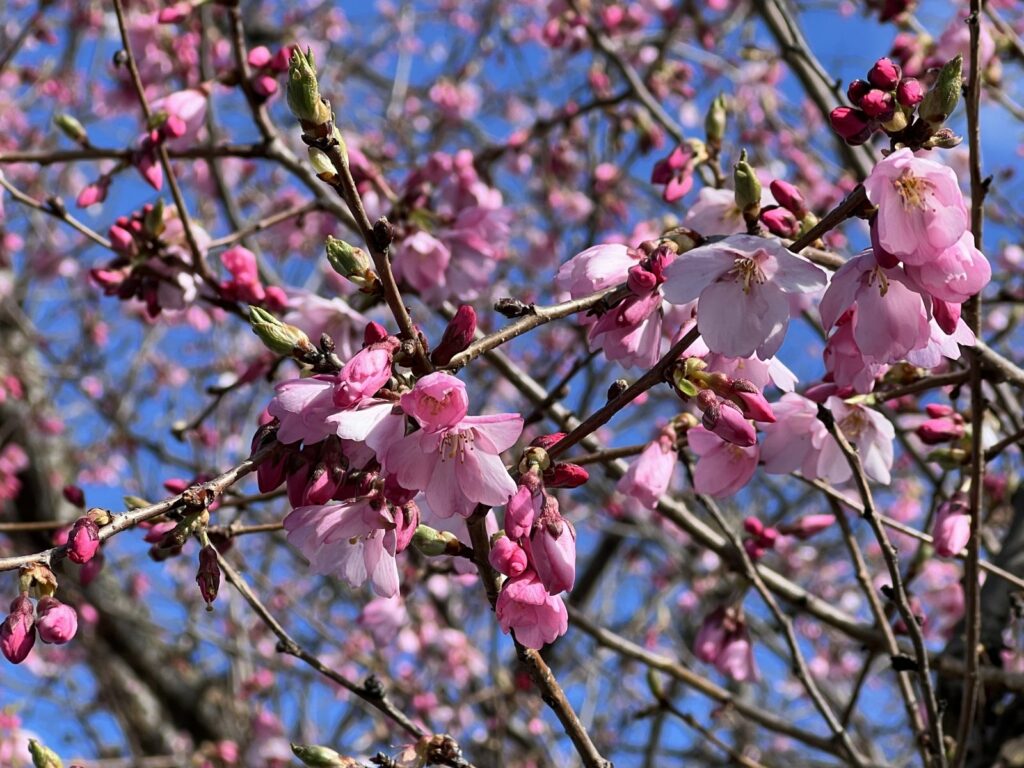
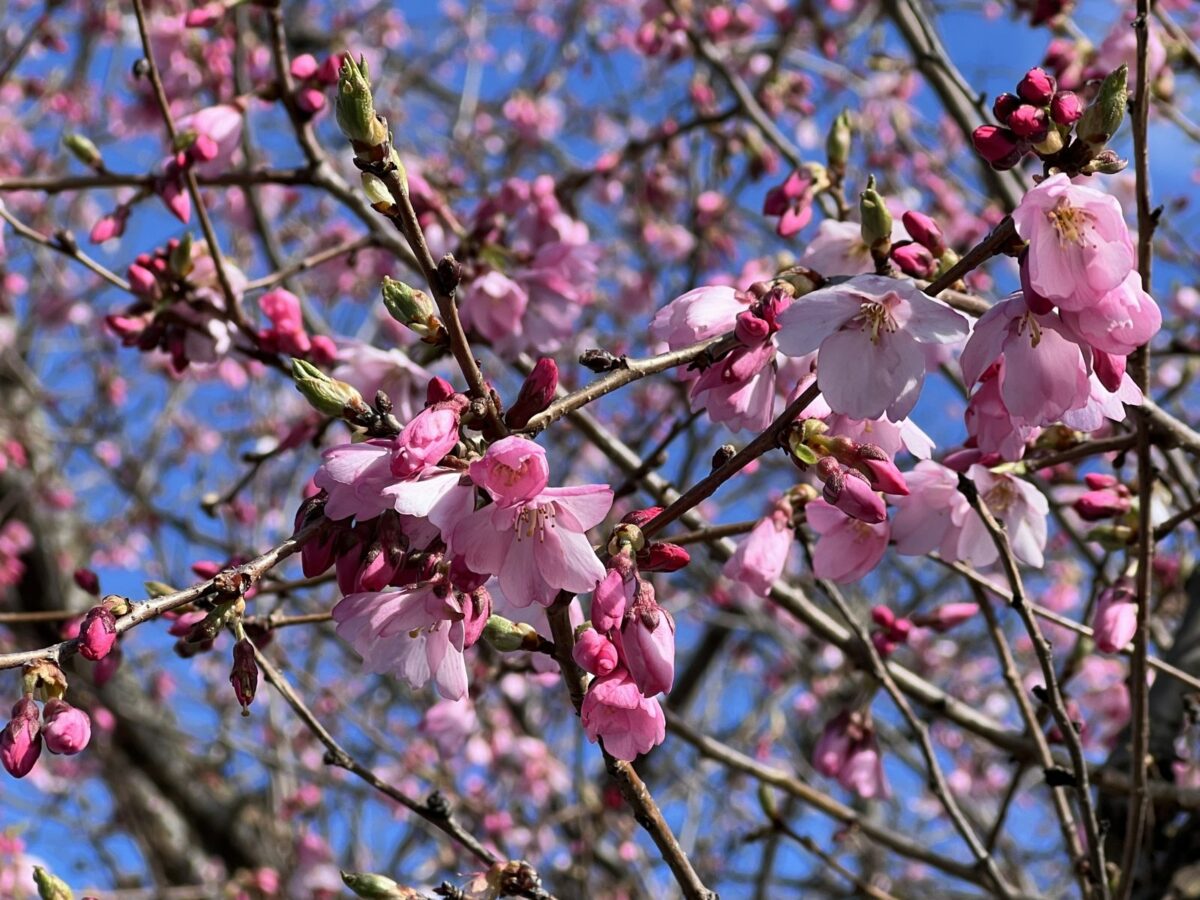
March 6, 2024. Even though most of the earliest to bloom ‘Whitcomb’ cherry trees were hard hit by the January freeze, there were some nice-looking blossoms, sparsely distributed on most of the trees. Here is a recent photo from Richmond.

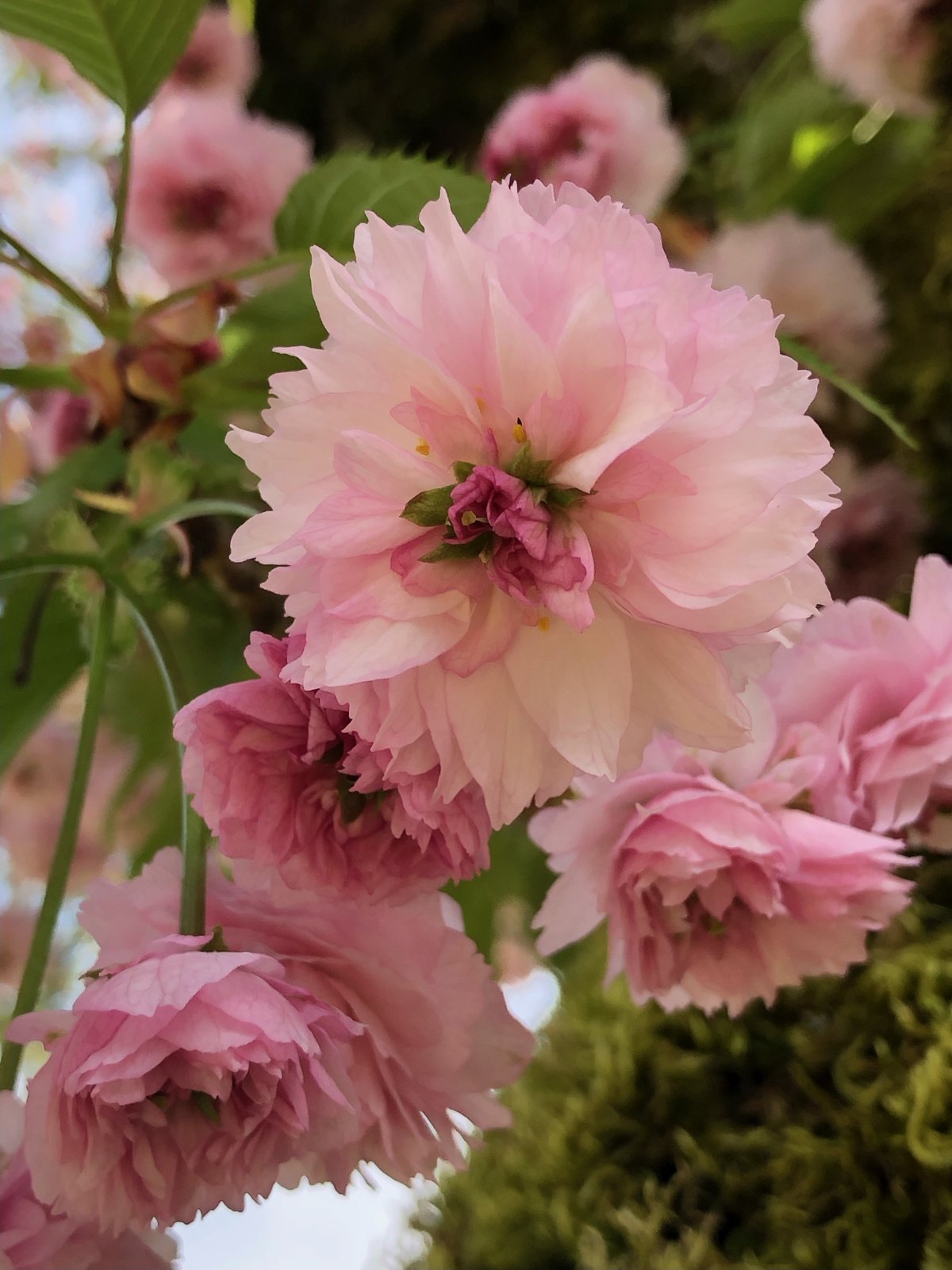
May 7, 2023. After such a grey April, who wasn’t excited to see Vancouver city streets colouring up with over 10,000 ‘Kanzan’ cherries, big double pink blossoms forming archways over so many of our streets?! There are many more in the surrounding neighbourhoods as well.
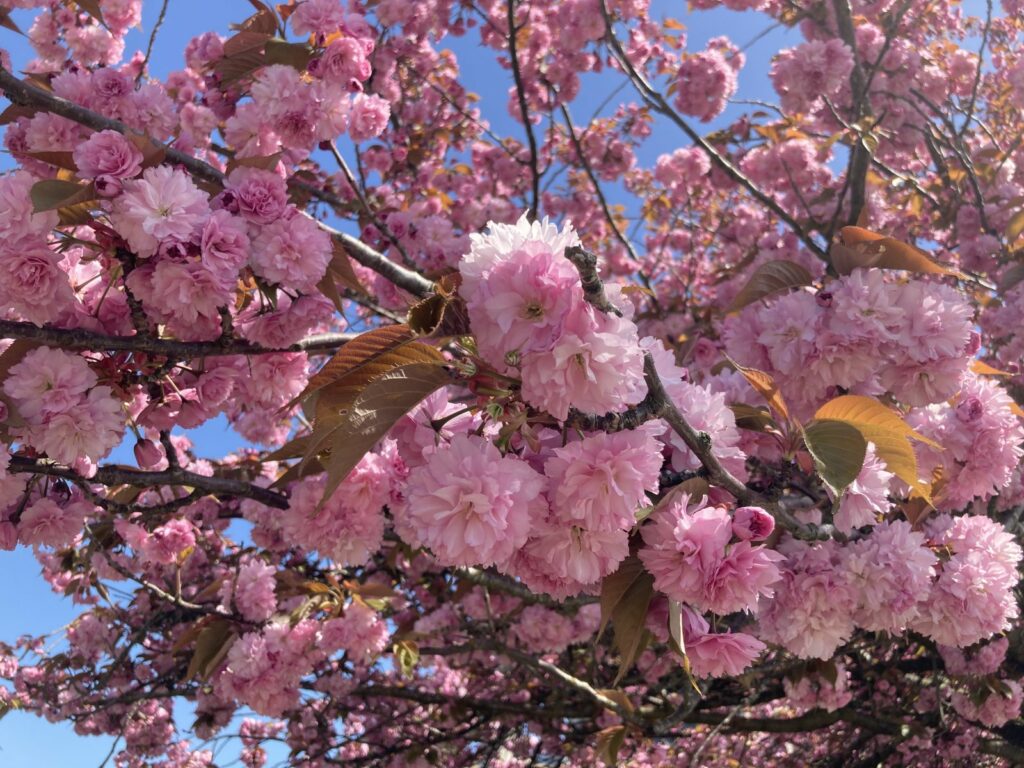
Here is a new kid on the block – as yet there are very few of these ‘Royal Burgundy’ trees. They are all youngsters, so we’re not too sure how large they get. The flowers seem identical to those of ‘Kanzan’, but the leaves are dark burgundy.
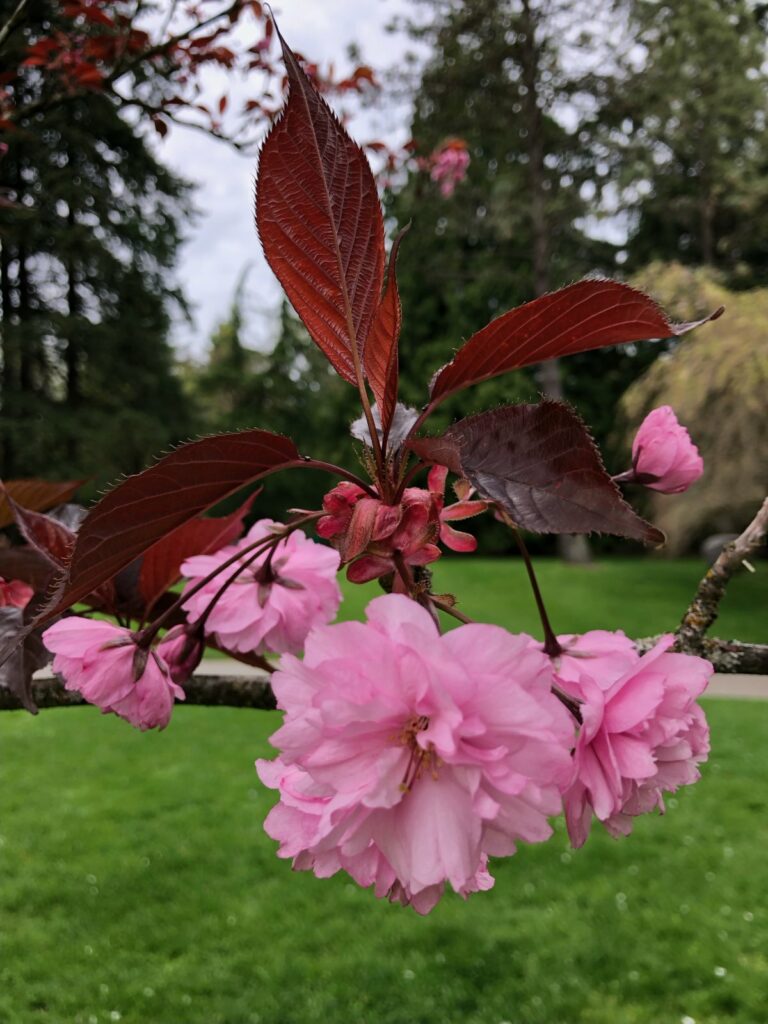
Here is a cultivar planted on city streets as ‘Kanzan’, but it’s ‘Kiku-zakura’, a chrysanthemum-flowered cherry with as many as 100 petals, yet smaller flowers than ‘Kanzan’. And what beautiful, complex little marvels they are. They open pink, fade to white, but second-story flowers develop in the blossom centres, so there is usually a mix of colours on any one tree and any one flower.
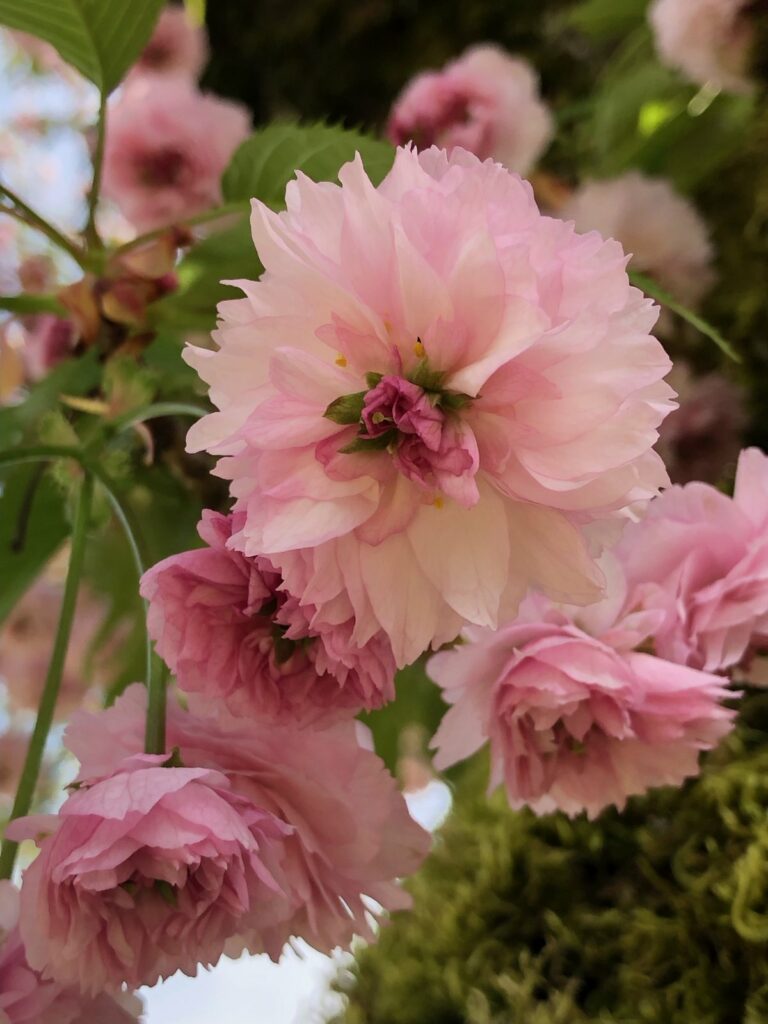
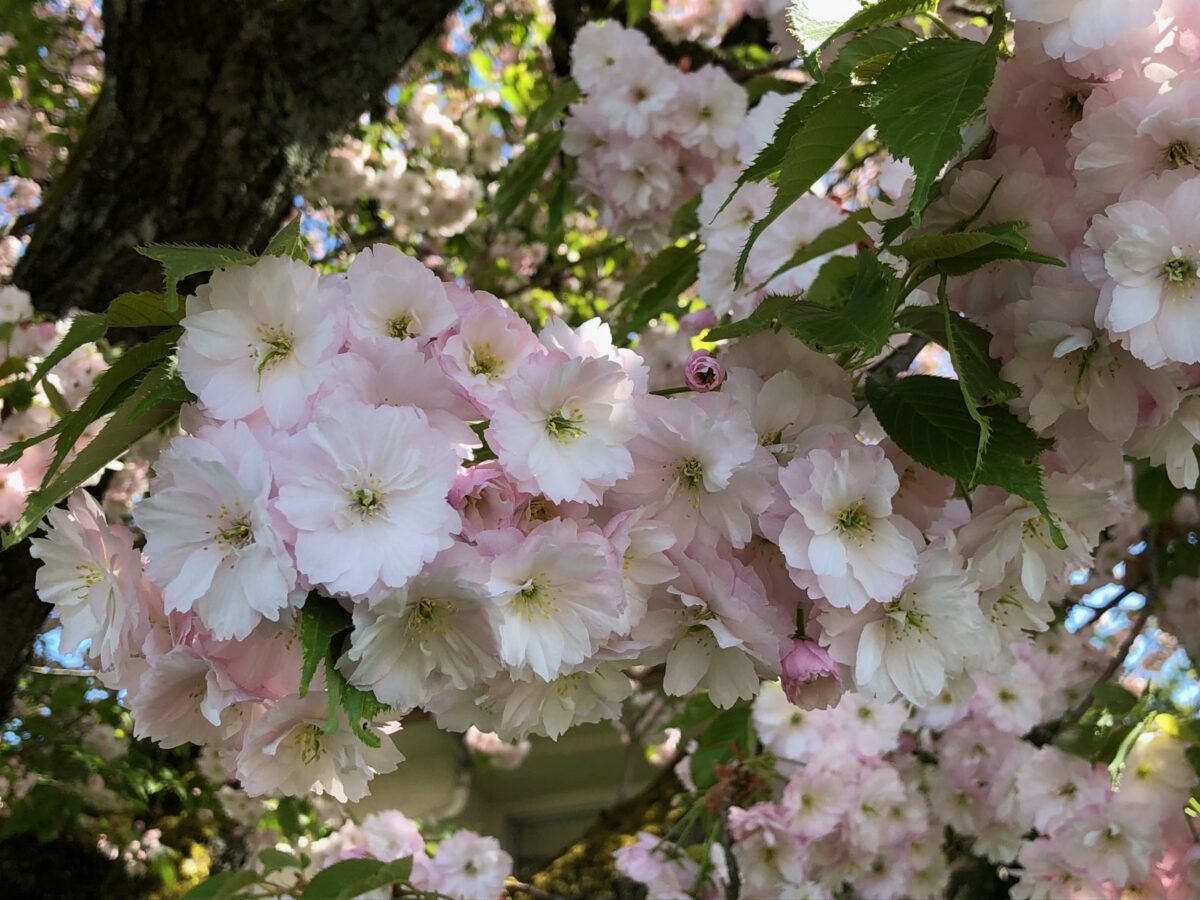
May 3, 2023. It’s almost all fluffy double blossoms from here on out. Here are two that are not all that rare. These are easily distinguished when the flowers are opening, but after their full bloom, distinguishing them can be difficult.
‘Shiro-fugen’, with its sturdy outstretched limbs and flat top is further distinguished by its overall dusky colouring up until the flowers have passed their peak of white-ness. The leaves are brown, buds are brownish pink, and the flowers open pure white. Next, after the flowers have been open for several days, the leaves will turn green. After that, the flowers will turn neon-pink starting from the centres. There will still be new flowers for a few weeks, and many of the old flowers will hang on, making this a tree of interest for a whole month, with a mix of flower colours.
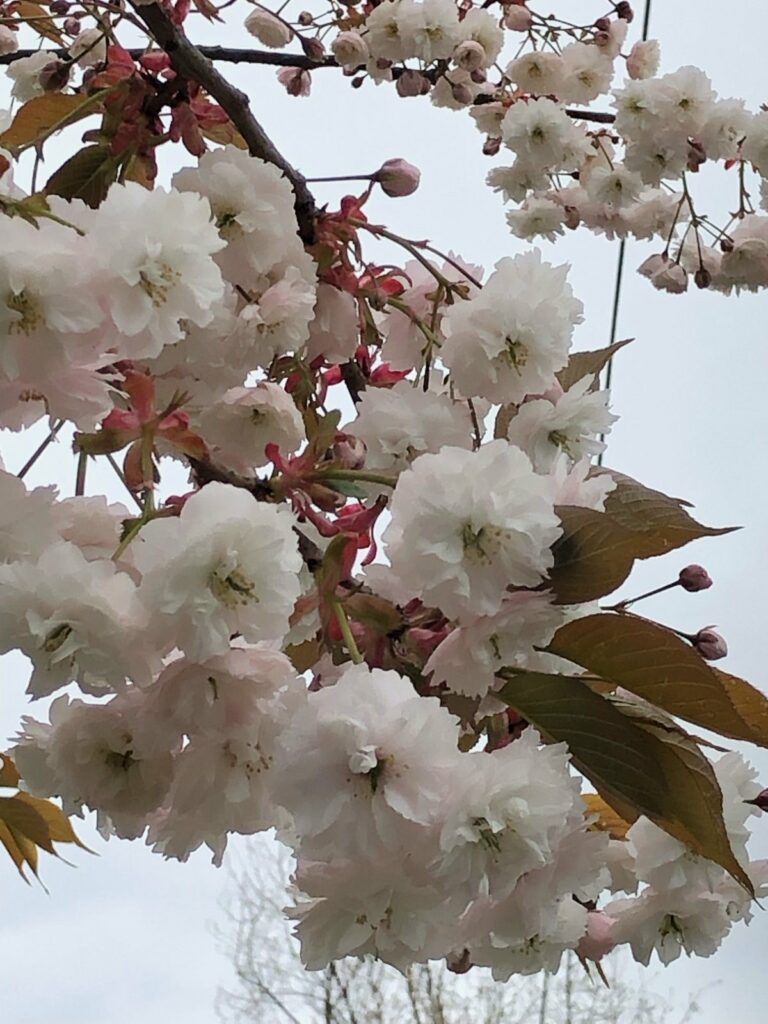
In contrast to the above trees, ‘Ichiyo’ trees have a fresher appearance due to the almost green leaves when the flowers are opening. And there is more pink in the newly opened flowers. The limbs are more upright, giving the trees a rounder shape. These flowers age to almost white, while ‘Shiro-fugen’ flowers age to pink. The trick when you come across one of these is knowing in which direction the colouring is developing.
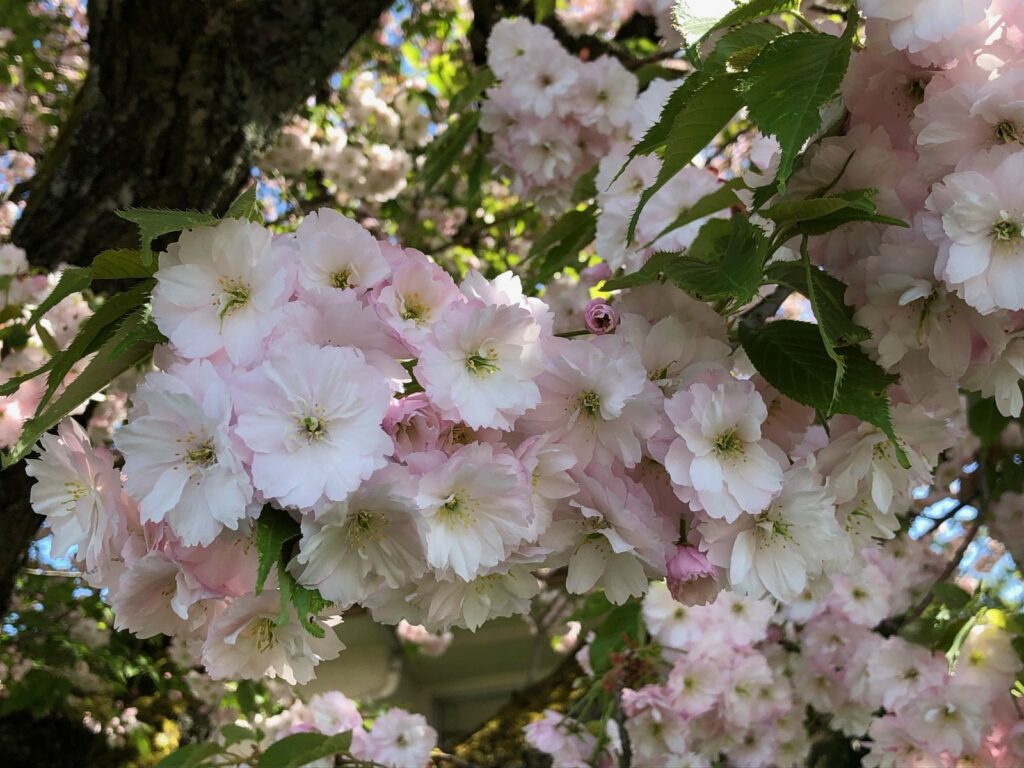
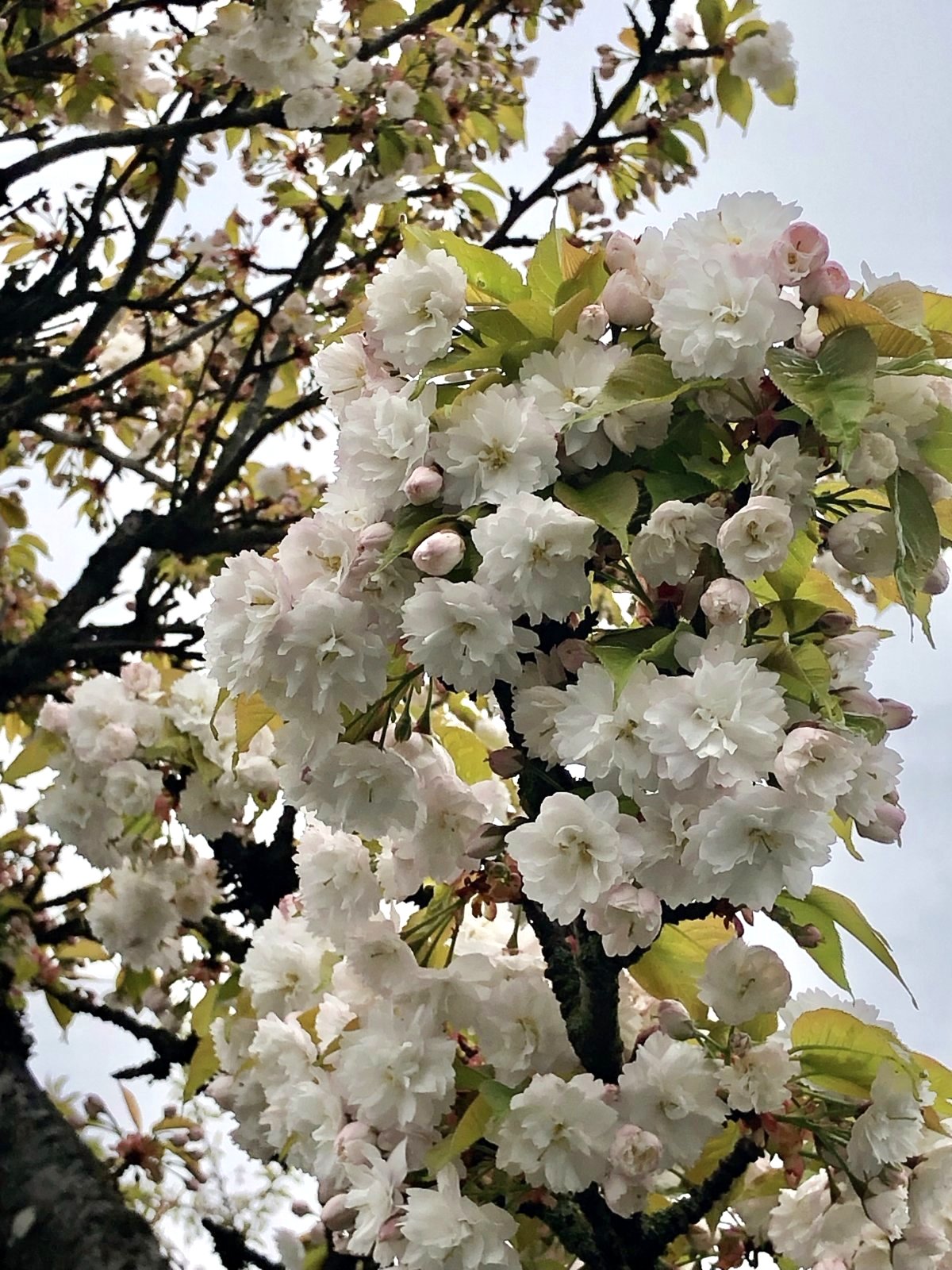
April 30, 2023. The festival has officially ended, but one month is far too short for showing off our beautiful blossoms. As long as the Cherry Scouts keep posting them, we’ll feature them here.
The whole area has just gone pink with ‘Kanzan’ cherries, but there are still rare gems showing off. Here are two with double white blossoms.
‘Ichihara-tora-no-o’, the tiger tail from Ichihara, the fanciful name referencing the way the flowers and leaves drape along the limbs.
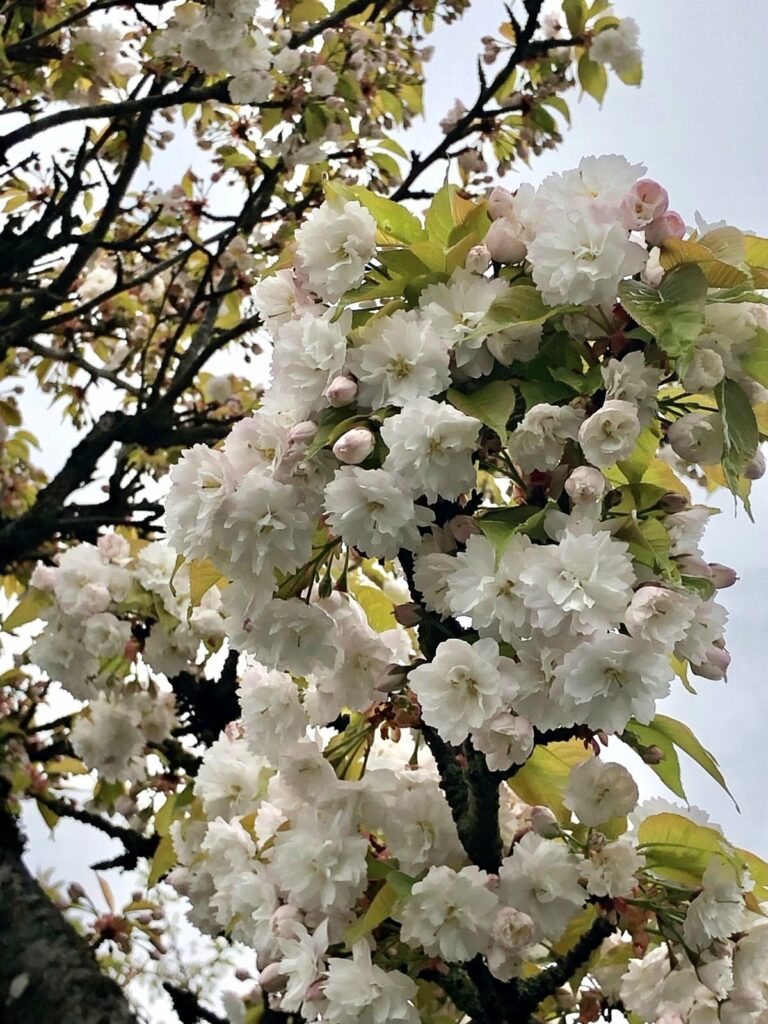
If there could be said to be opposites, ‘Shogetsu’ might be it – instead of slithering along the limbs and branches, this cultivar’s flowers dangle from long stems, leading to its name meaning “moonlight through pine trees”.
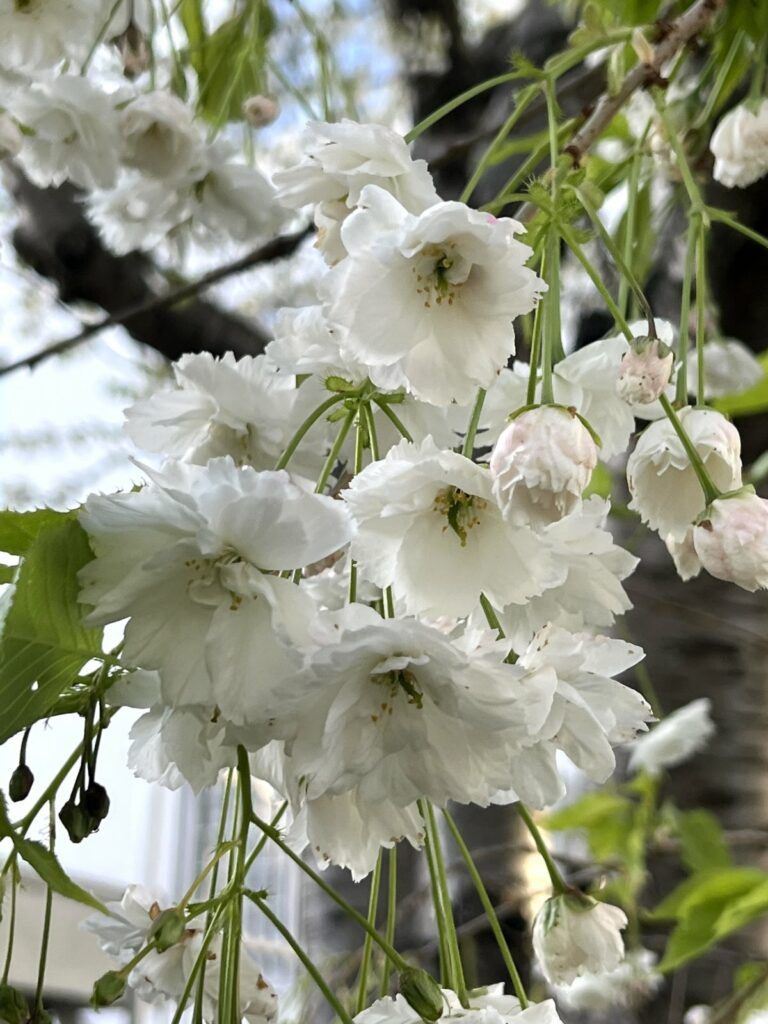
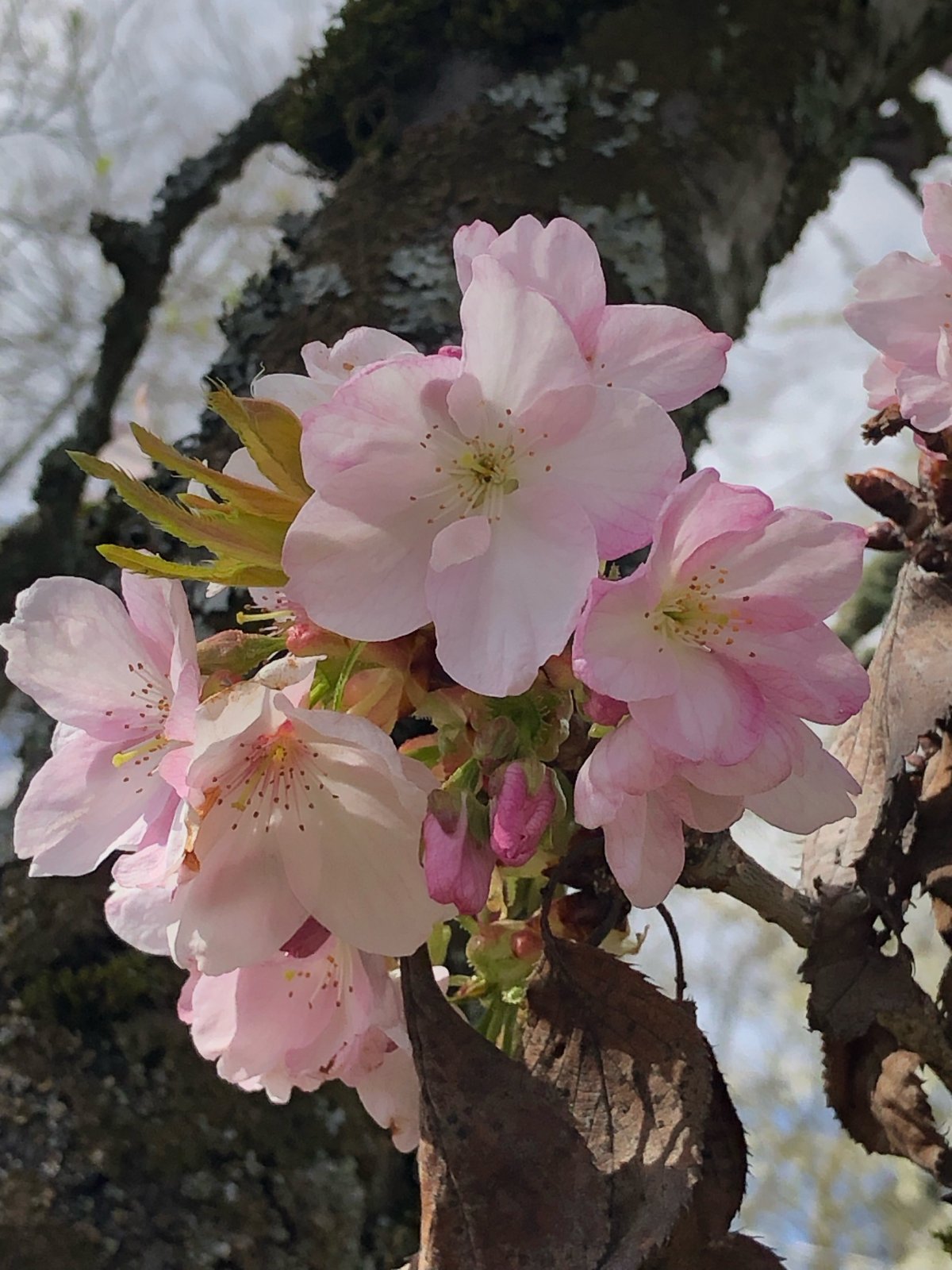
April 25, 2023. Here are two rare large single blossoms, both sometimes carrying some extra petals. ‘Mikuruma-gaeshi’ has been featured here before, but this photo is especially nice, in that you can see the darker pink buds, still a lot of pink in the flowers, and the very occasional extra petaloid on one of the flowers. Well, and some dead leaves, but the beauty of the flowers is winning out.
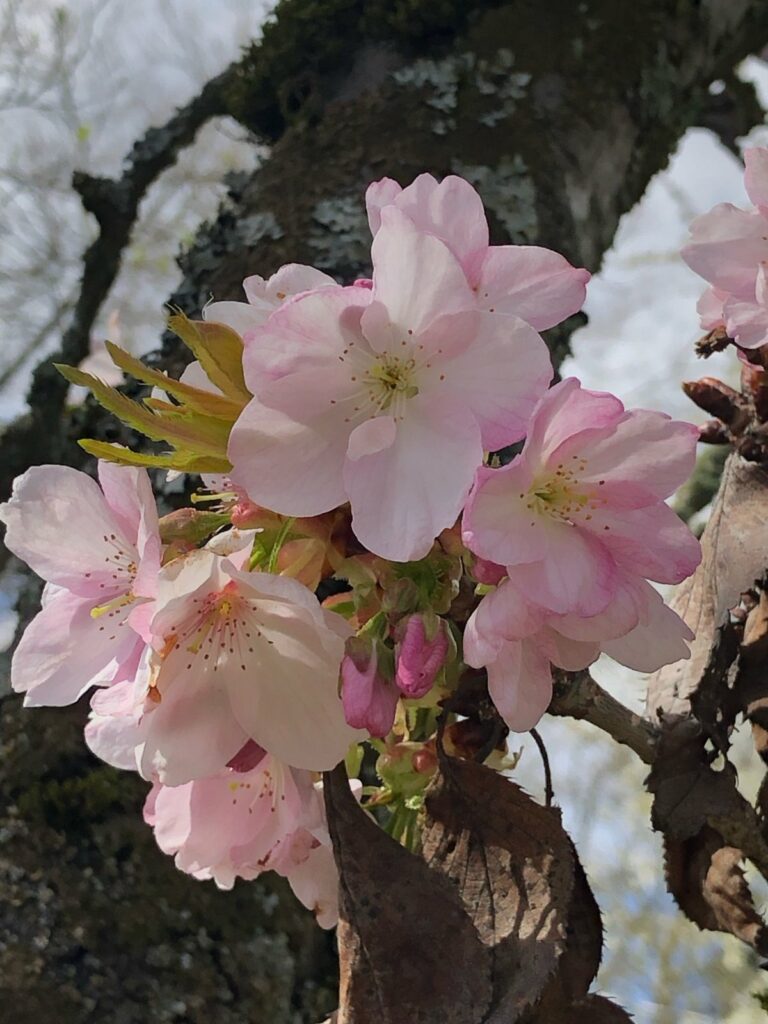
The ‘Ojochin’ below is even more rare locally, but it may make a come-back since this cultivar was included in the VCBF plant sale a few years ago, clones from this tree at the Japanese War Memorial in Stanley Park. When flowers open, they can be closer to the colour of the ‘Mikuruma-gaeshi’ above and also have some extra petals, so can be hard to distinguish from that. These flowers are even larger than on ‘Mikuruma-gaeshi’. The flower buds generally hang down to match the translation of their name – “large paper lantern”.
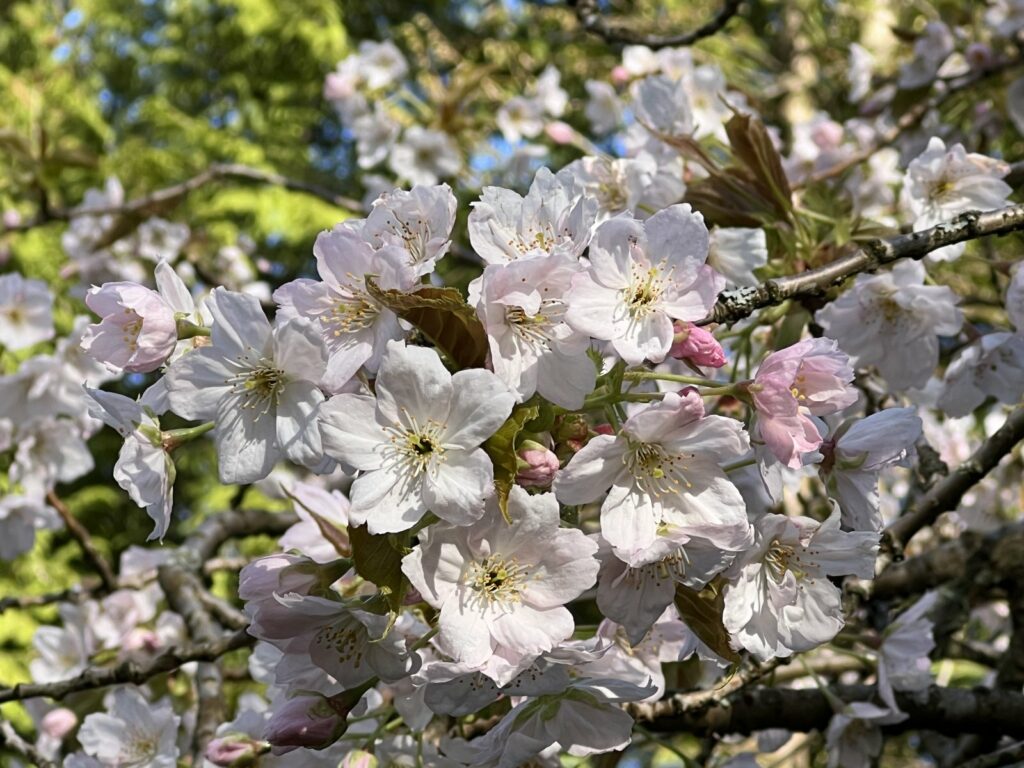
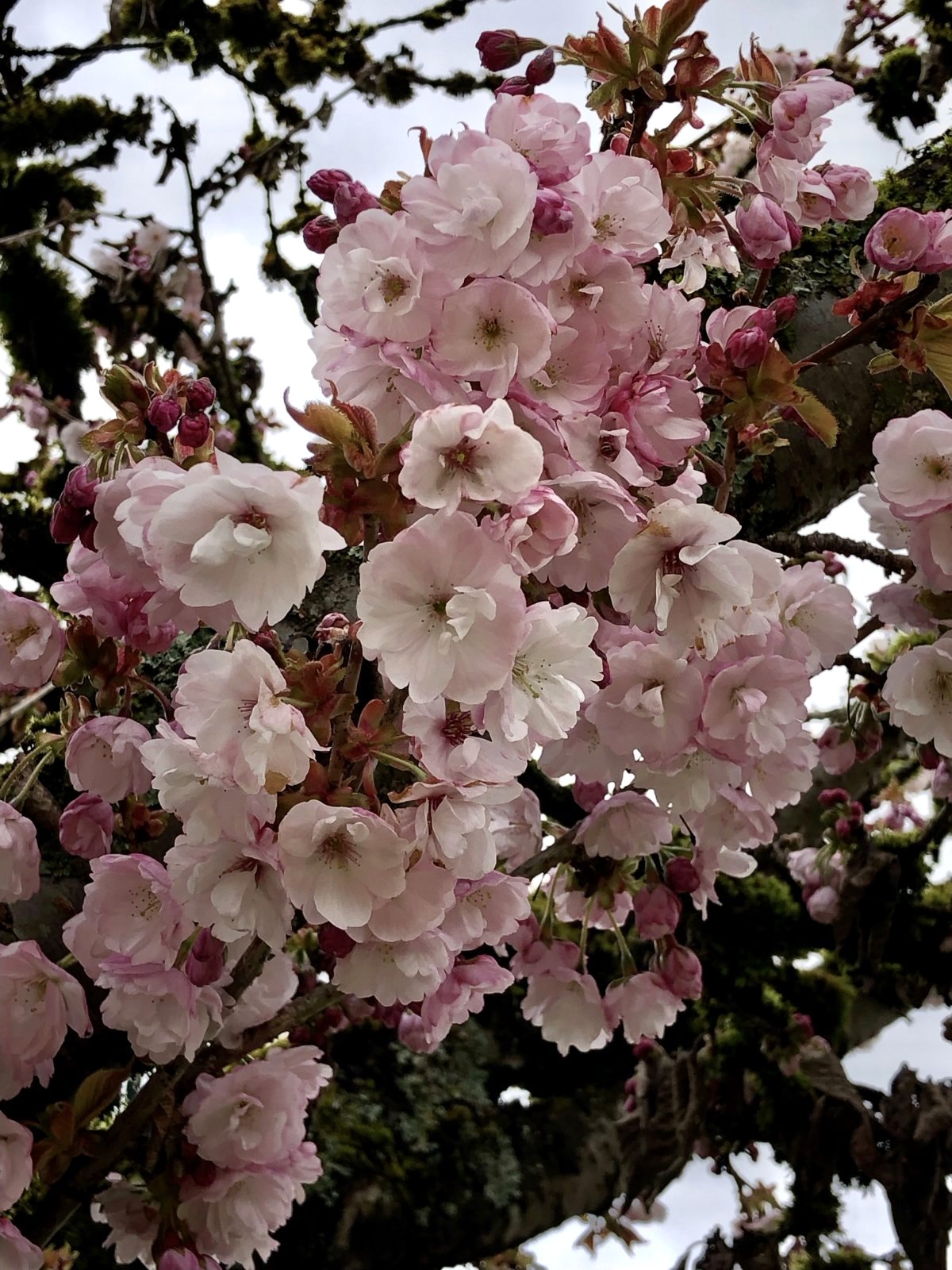
April 21, 2023. Double blossoms today! Still not the ubiquitous late-season ‘Kanzan’, which are biding their time. It’s hard to beat the beauty of these dark purplish-red ‘Takasago’ buds set against the riot of colour in the double pinky-white blossoms. The densely packed flower clusters suffer from an air circulation problem in our rainy climate, making the trees not all that healthy.
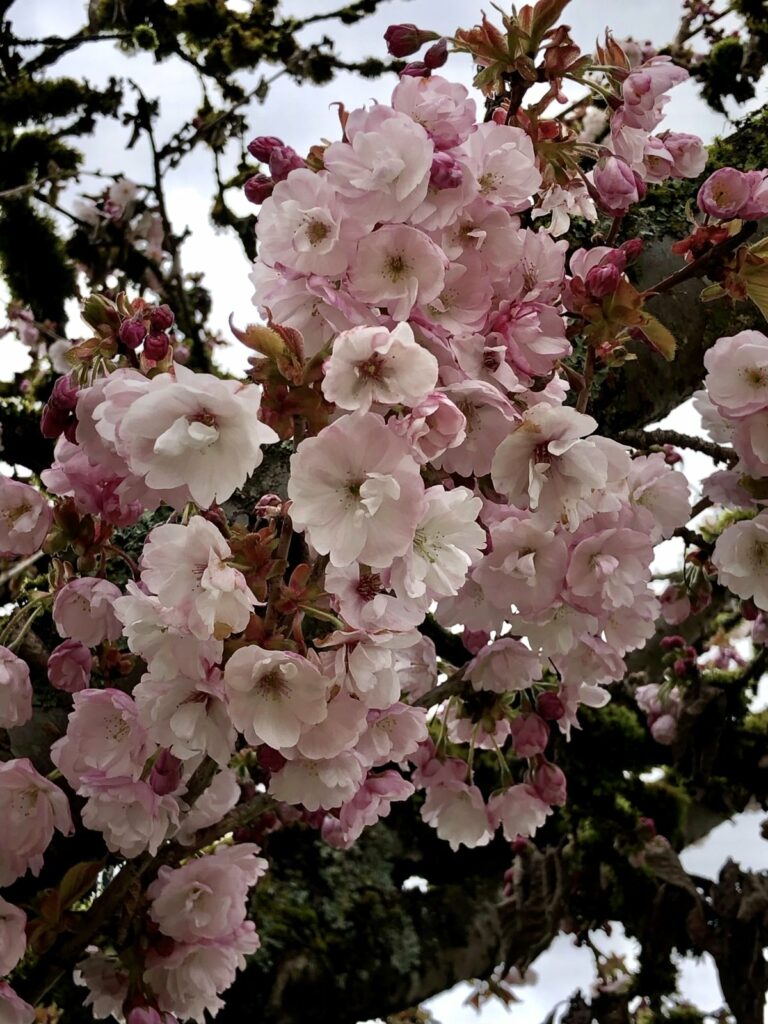
But flowers don’t need all that colour to be stunning. Much more common around here are ‘Shirotae’, referring to a kind of white cloth in Japanese. Buds become white before they open. The green leaves often emerge with the flowers. These blossoms are fragrant, smelling of almonds. These are often planted in groups, making the fragrance all the more noticeable.
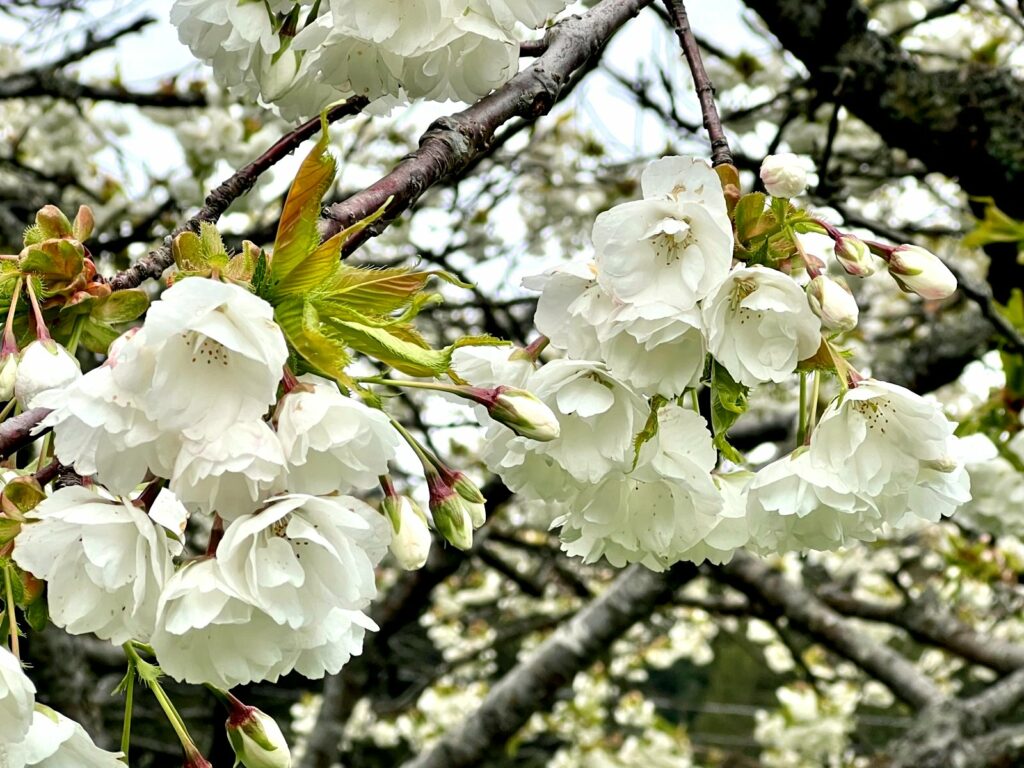
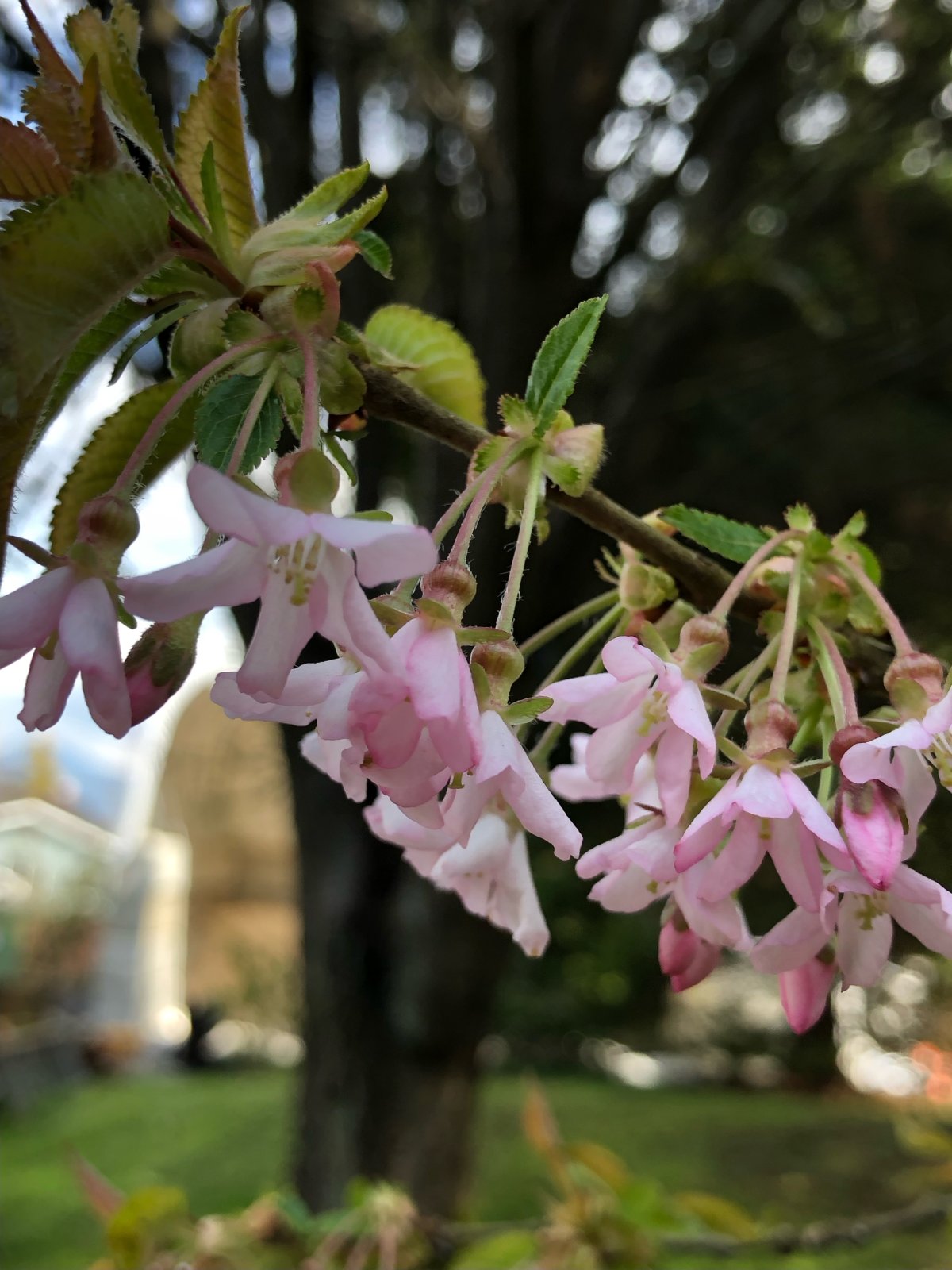
April 20, 2023. Today we’ll do rare single pink blossoms.
These Schmitt cherry flowers are so small, on trees so tall, that they’re usually missed being noticed at all. This photo is from six days ago at VanDusen Botanical Garden, a colder Vancouver neighbourhood, so these flowers were still fresh and pink. By now, they are probably white and even easier to miss seeing.
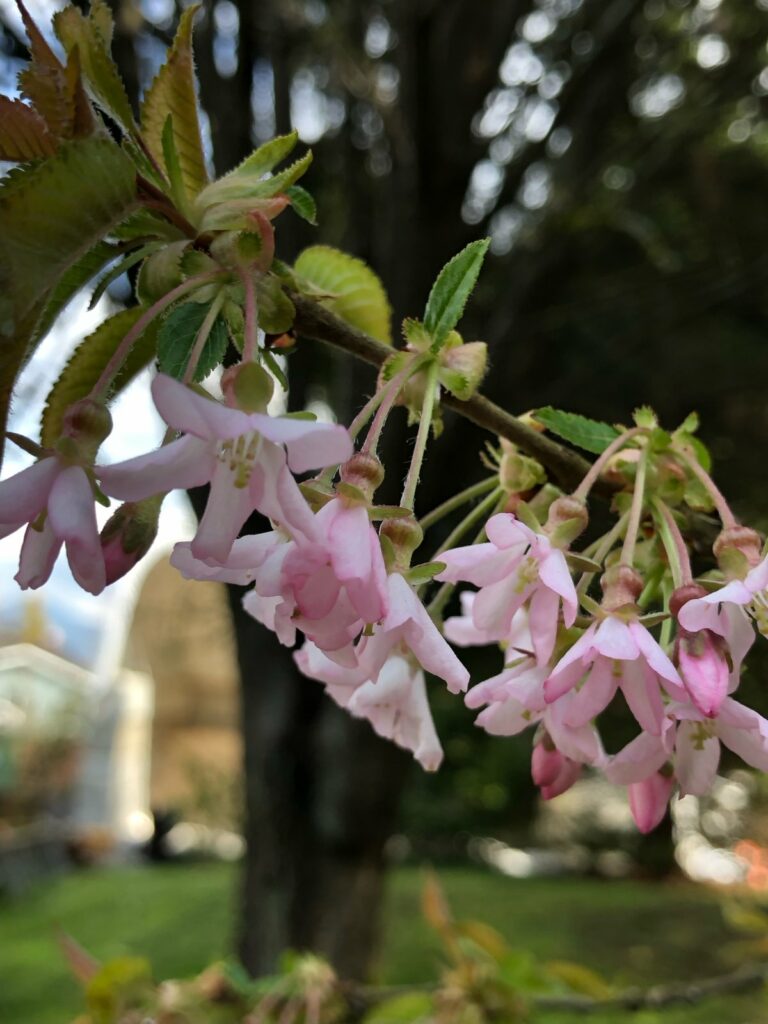
We only know two locations for ‘Choshu-hizakura’, beautiful trees with petals often edged in a darker pink, accompanied by bronze leaves.
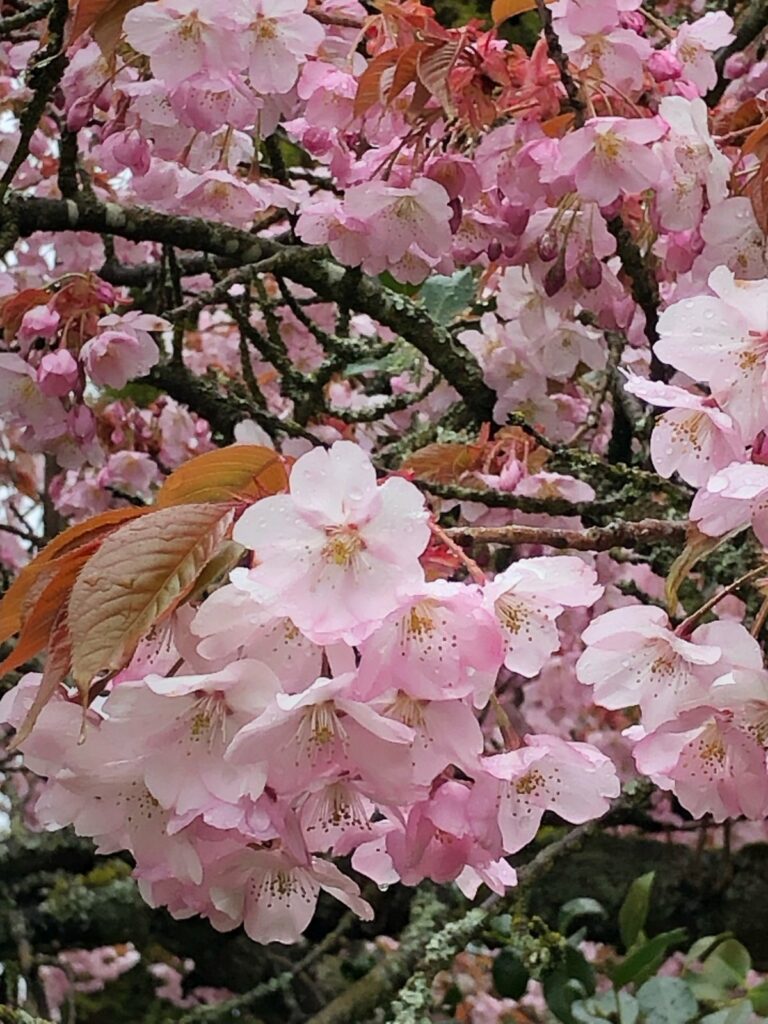
‘Mikuruma-gaeshi’ flowers look similar to the ‘Choshu-hizakura’ above, but are not as intensely coloured, and the trees are more sparsely branched and not nearly as hefty or healthy. Both cultivars have occasional extra petals. This is the first cultivar this season on which we have seen green leaves with pink flowers.
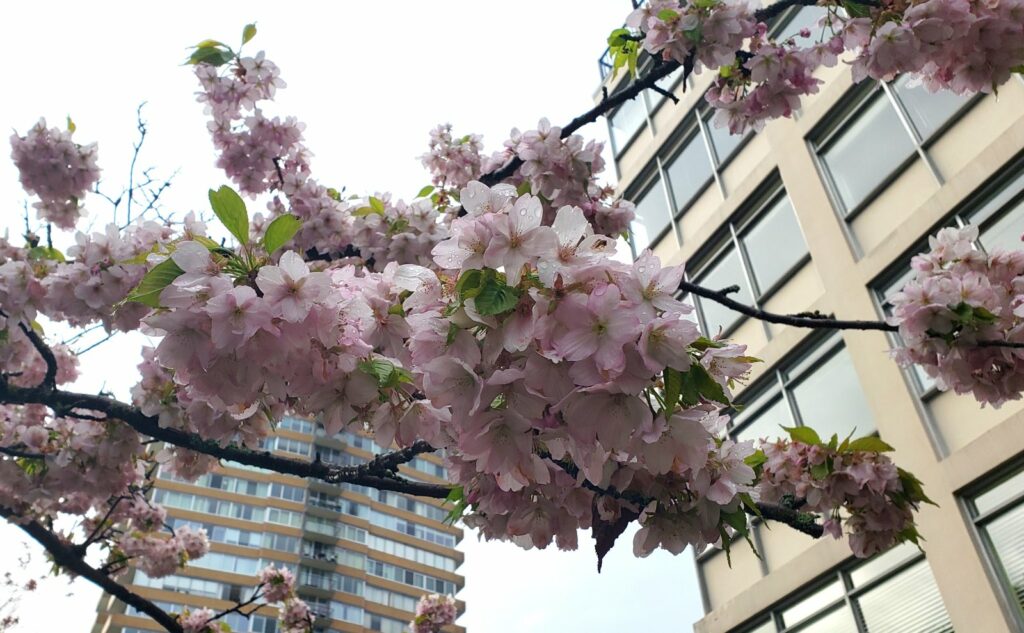
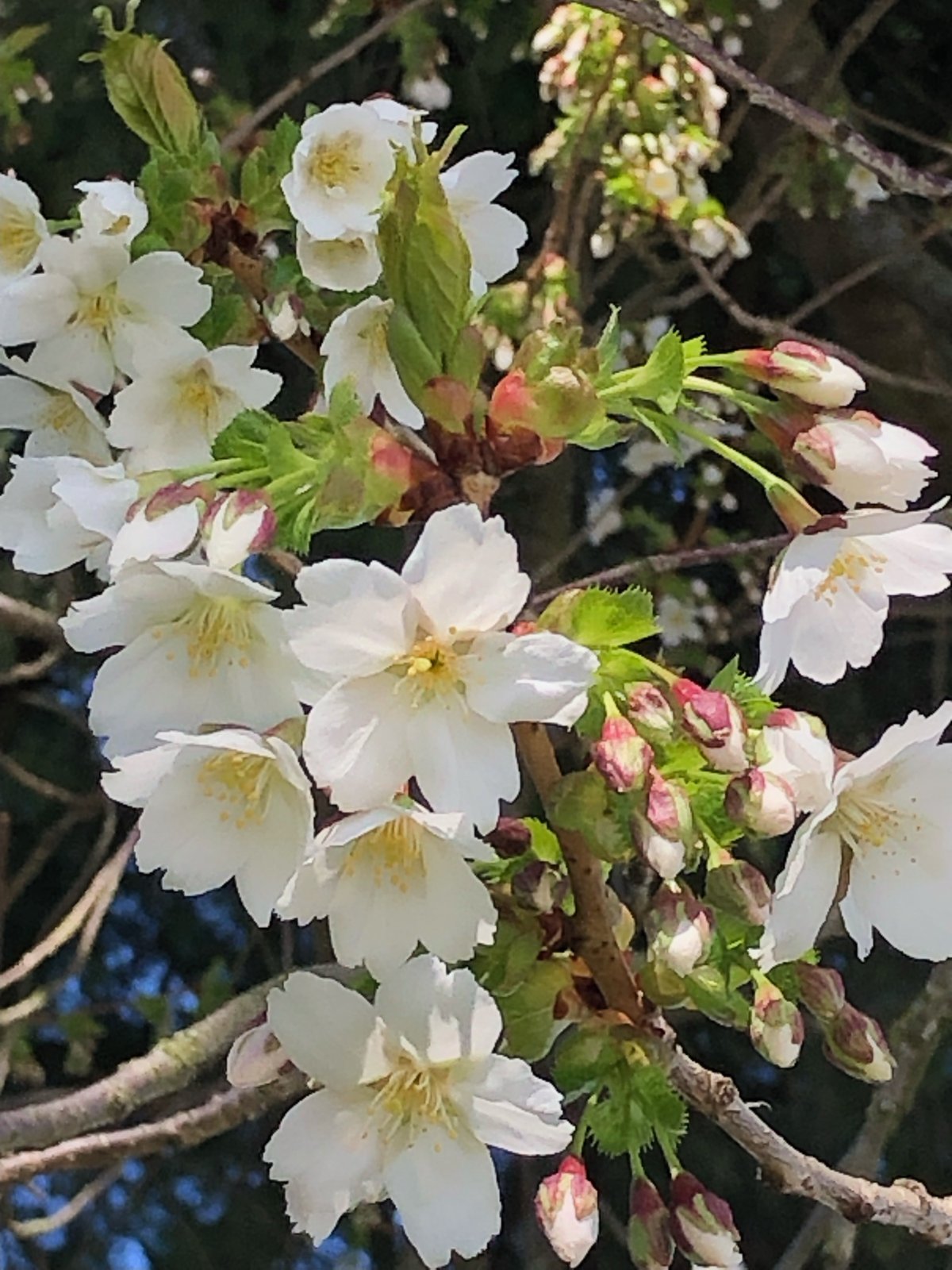
April 17, 2023. Our popular widely planted ‘Akebono’ trees are starting to fade, and it’s not quite time yet for the even more widely-planted ‘Kanzan’ trees, so it’s time for us to notice some of the rare gems. Here are yet more single-whites, flowers with just five petals.
The flowers on the Oshima-zakura cherry look ever-so-much like those of ‘Umineko’ and ‘Snow Goose’ (featured at Yesterday’s news – Single whites: ‘Somei-yoshino’, ‘Akebono’ and ‘Umineko’/’Snow Goose’ – Vancouver Cherry Blossom Festival (vcbf.ca), of which it is one of the parents. But they are fragrant, and the tree shape is wide-spreading instead of upright.
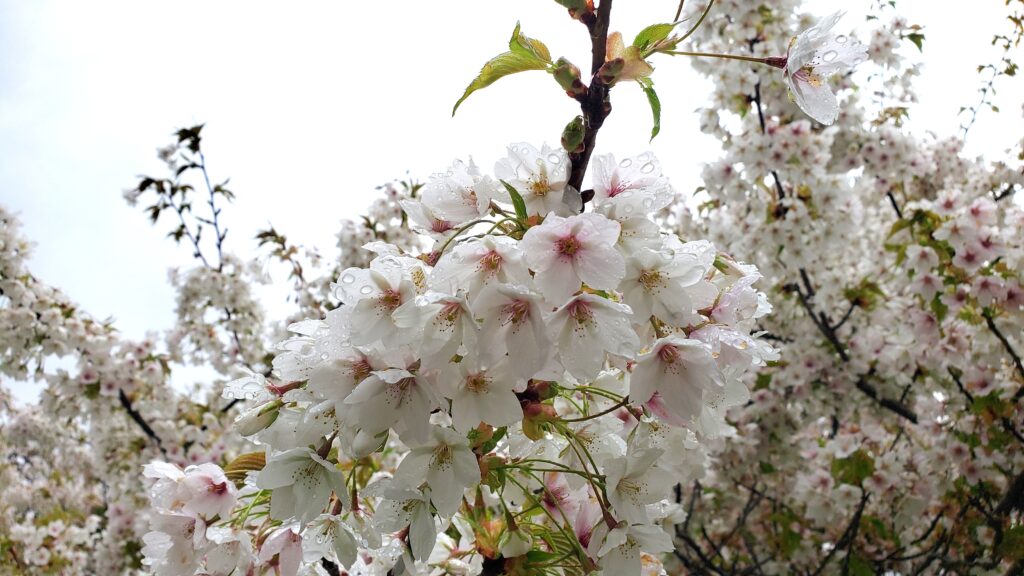
Notice how smooth the petal edges are on the Oshima-zakura above. Now check out the jagged petal edges on this ‘Washi-no-o’. It’s name means “eagle’s tail”. These flowers are also fragrant.
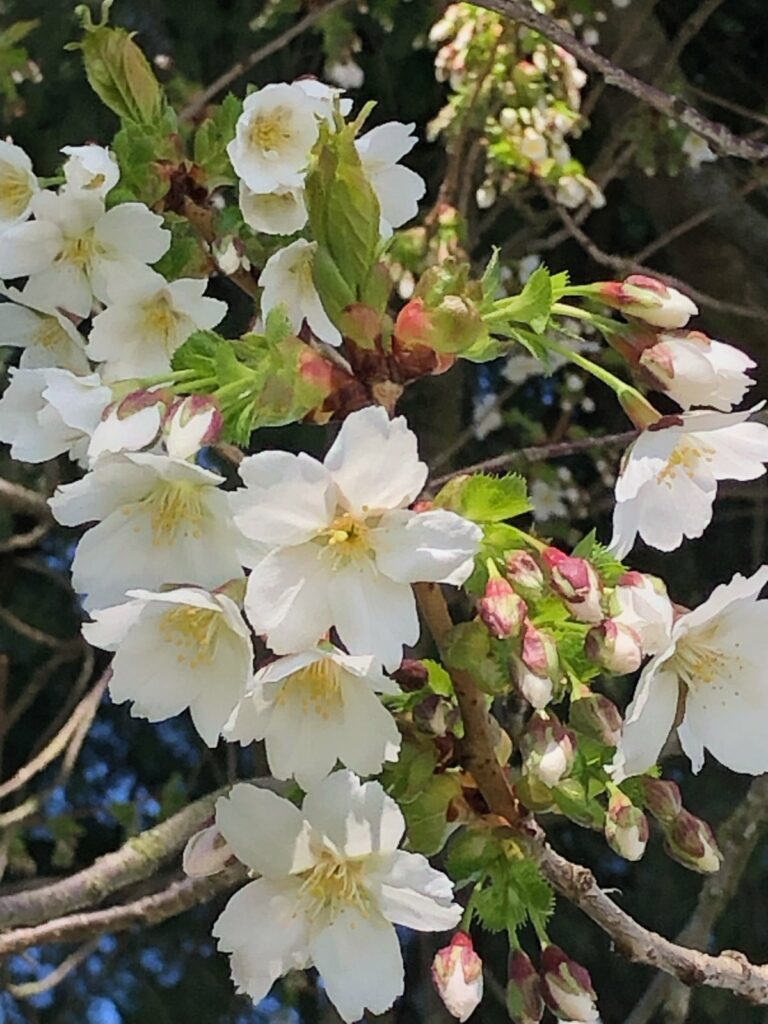
‘Tai-haku’, the “great white cherry”, are trees with substantial broad-spreading limbs when they are allowed the space to grow to their potential. The flowers are themselves of great size (for a cherry) – they can be up to 6 cm across, and the petals are quite rounded, making the flowers look even larger, particularly as they are bracketed by shiny bronze leaves (the leaves here have just emerged; check back in a week or so for a better photo).
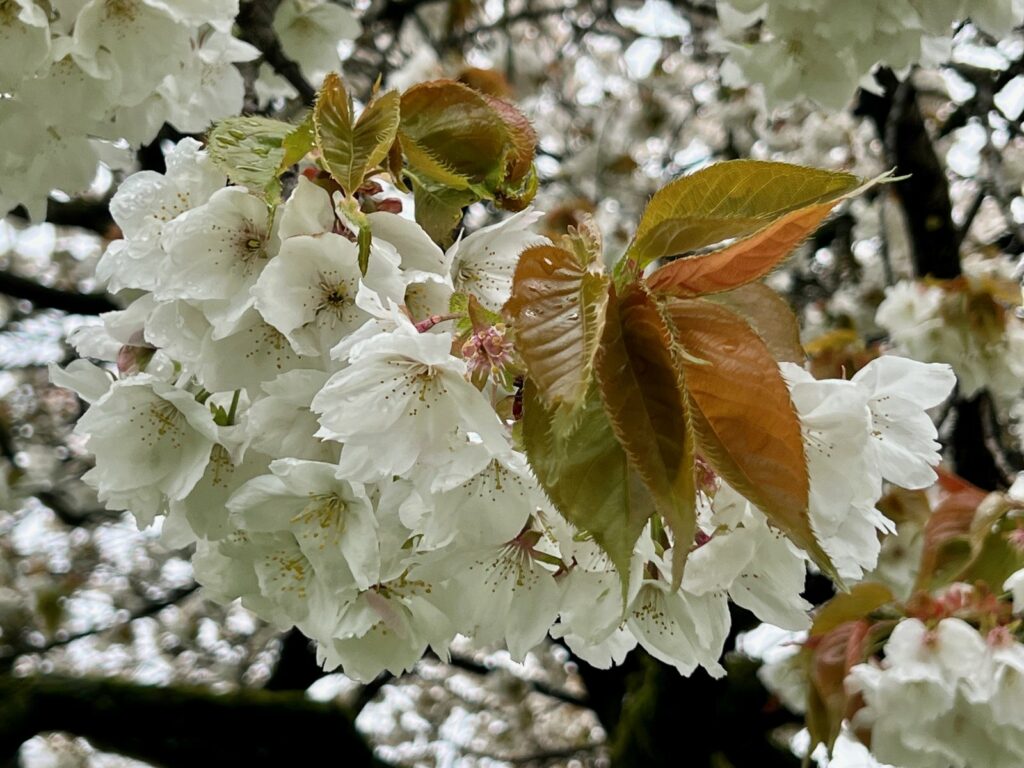
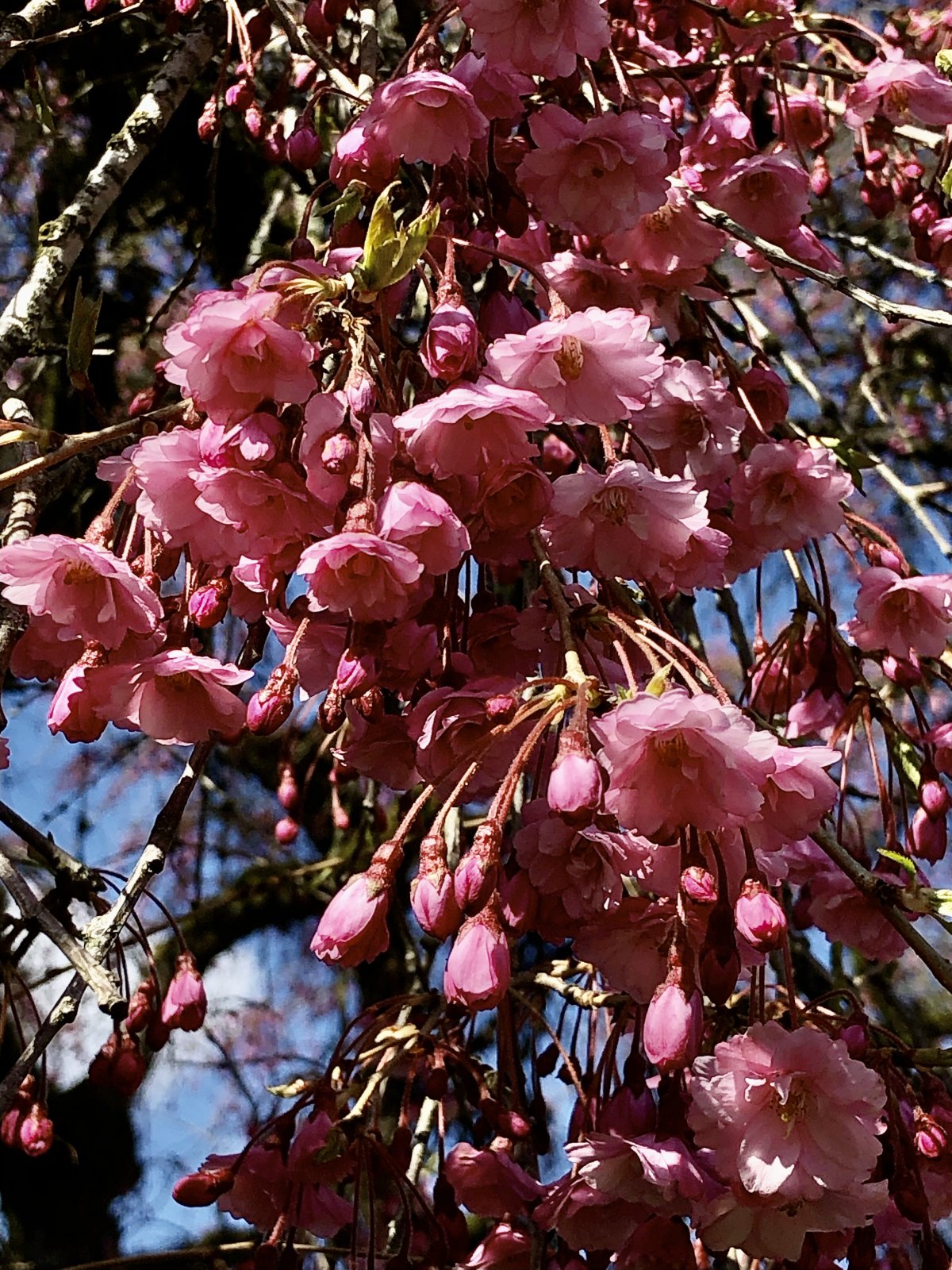
April 12, 2023. Pink blossoms today, on weeping cherry trees. “Shidare” (drooping) in Japanese cherry blossom names is used to describe the tree form called “weeping” in English.
So, ‘Beni-shidare’ can be described as the Red Cascade, which is much more poetic than Red Weepings and more in line with how Taki-zakura was named, the Waterfall Cherry of Miharu that is a 1,000 year-old ‘Beni-shidare.’ Certainly none of Miharu’s visitors would think of weeping.
Here are ‘Beni-shidare’ flowers, single blossoms (five petals).
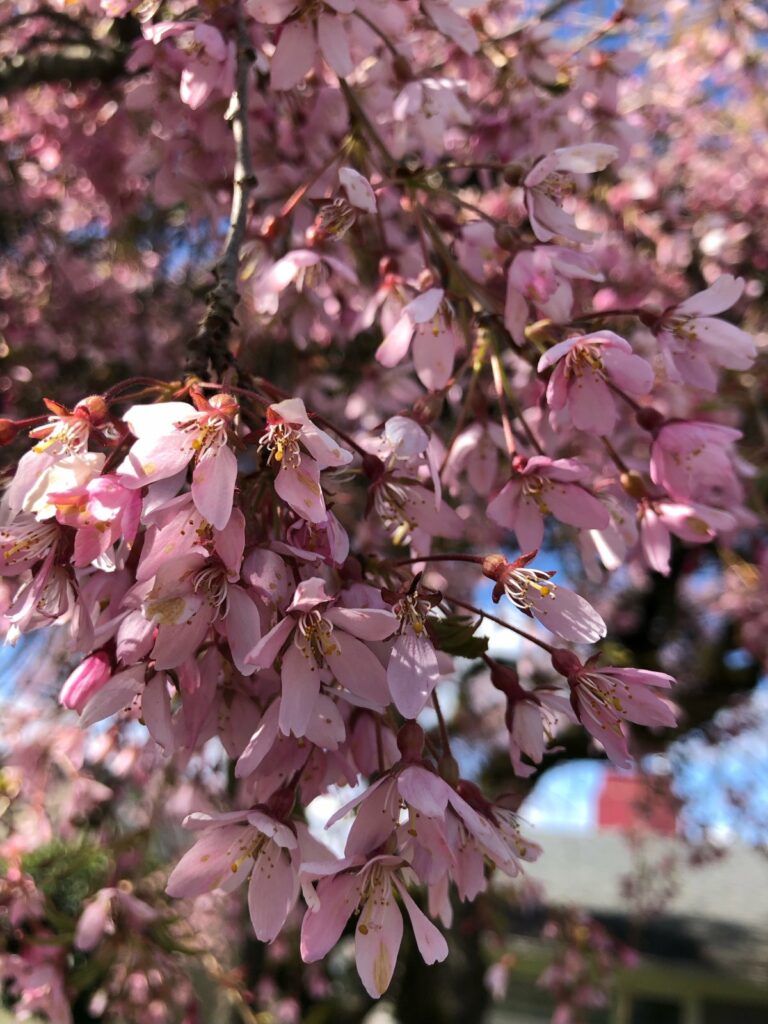
Where this large tree is located on East Culloden Street in Vancouver, right next to it, and of similar size, is a ‘Yae-beni-shidare’, with double pink flowers – “yae” refers to the double flowers.
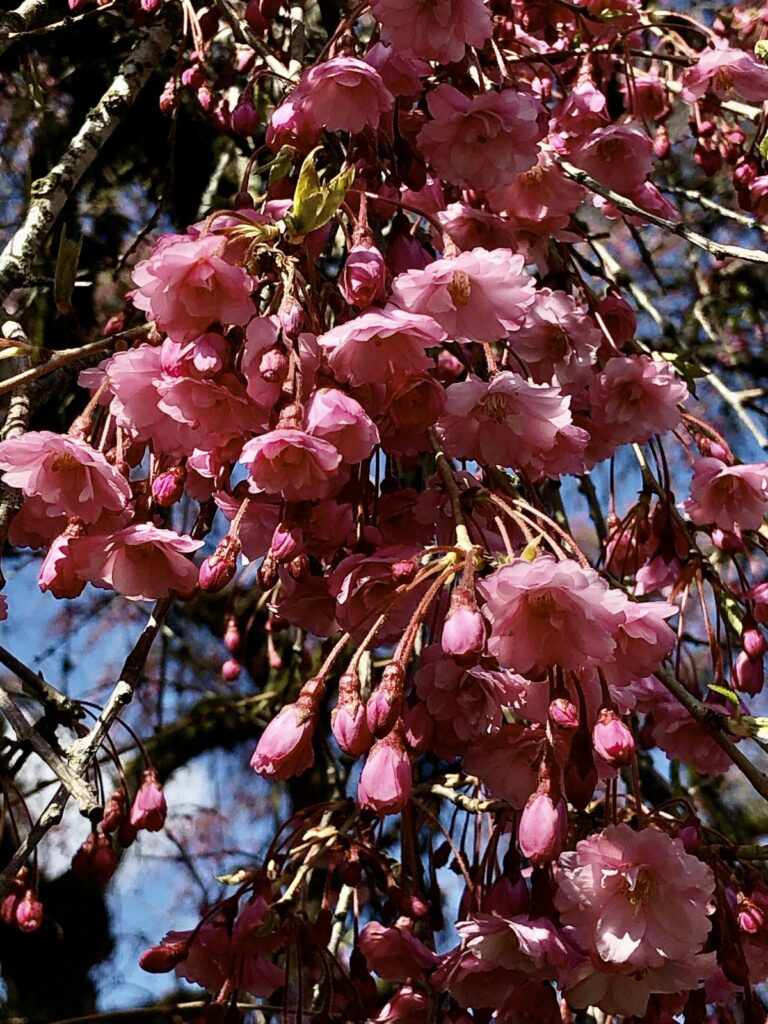
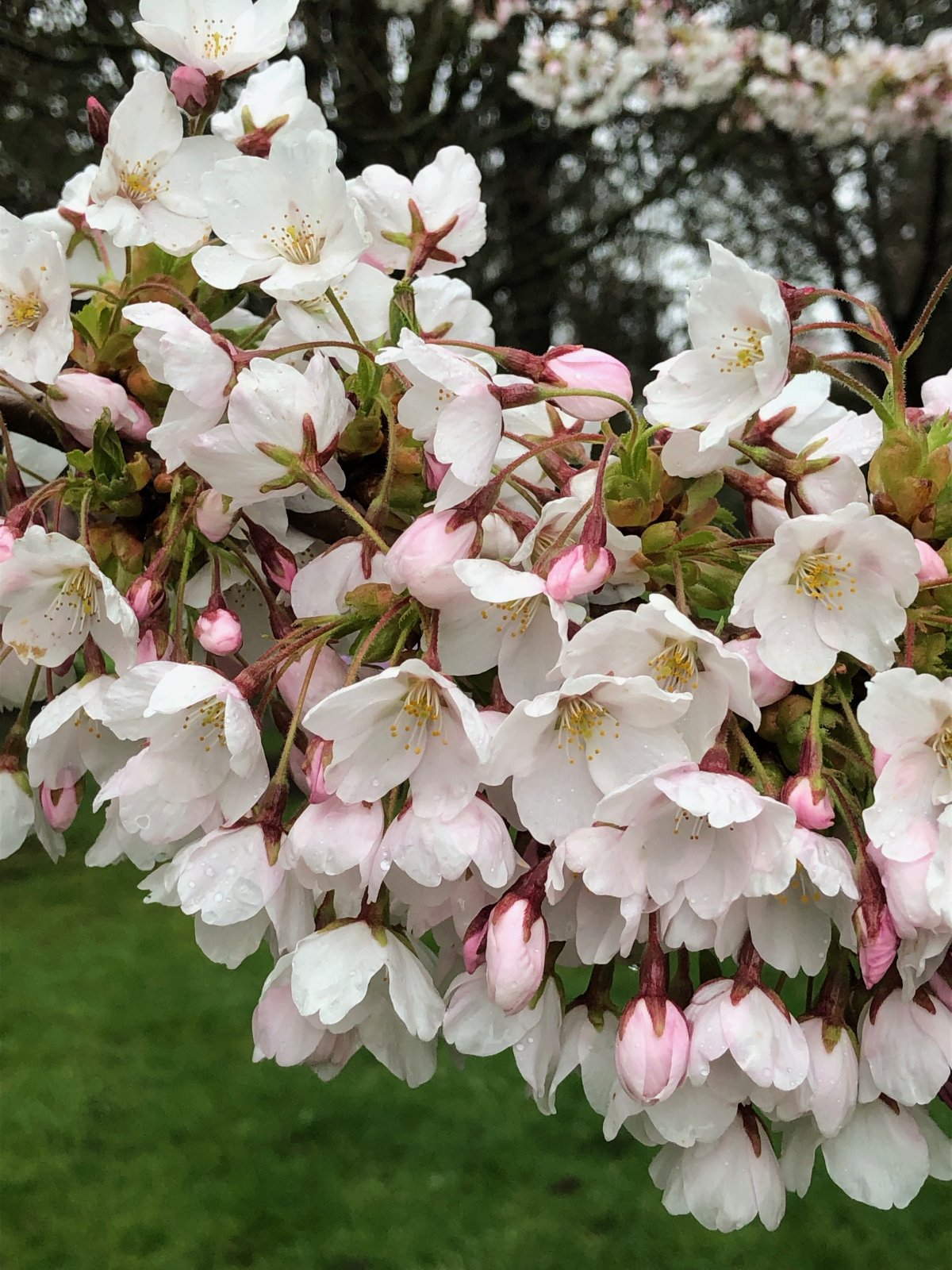
April 11, 2023. More single white blossoms. Here are two cultivars that are often confused, and another that could cause some confusion were it more common. ‘Somei-yoshino’ is not so common in Vancouver, but it’s the most popular cherry in Japan and is the one planted at the tidal basin in Washington, DC and at the Quad at the University of Washington in Seattle. The single white flowers are not more than 3 cm across and hang on sparsely hairy stems.
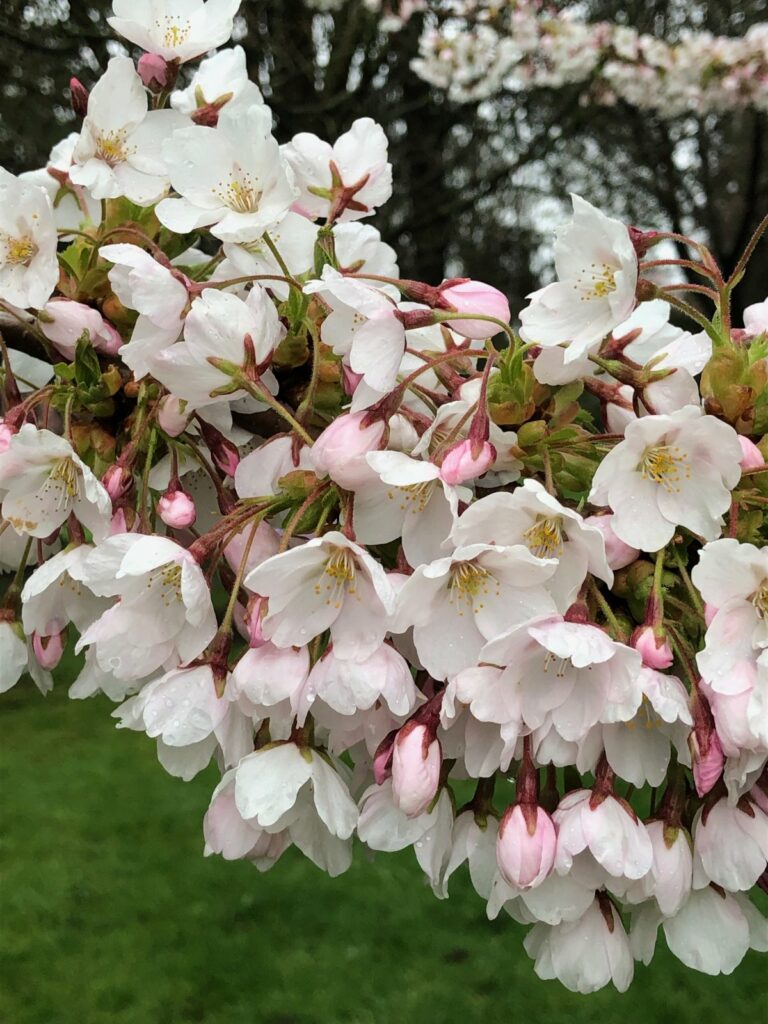
Very popular in Vancouver are ‘Akebono’, with several block-long plantings forming an arch over the street. This tree is in the same species as ‘Somei-yoshino’ (Yedoensis). The flowers are slightly larger than ‘Somei-yoshino’, are more pink at peak bloom, and their stems are less hairy. Some flowers exhibit an extra small petal in the centre, which is never the case for the other two cultivars featured here.
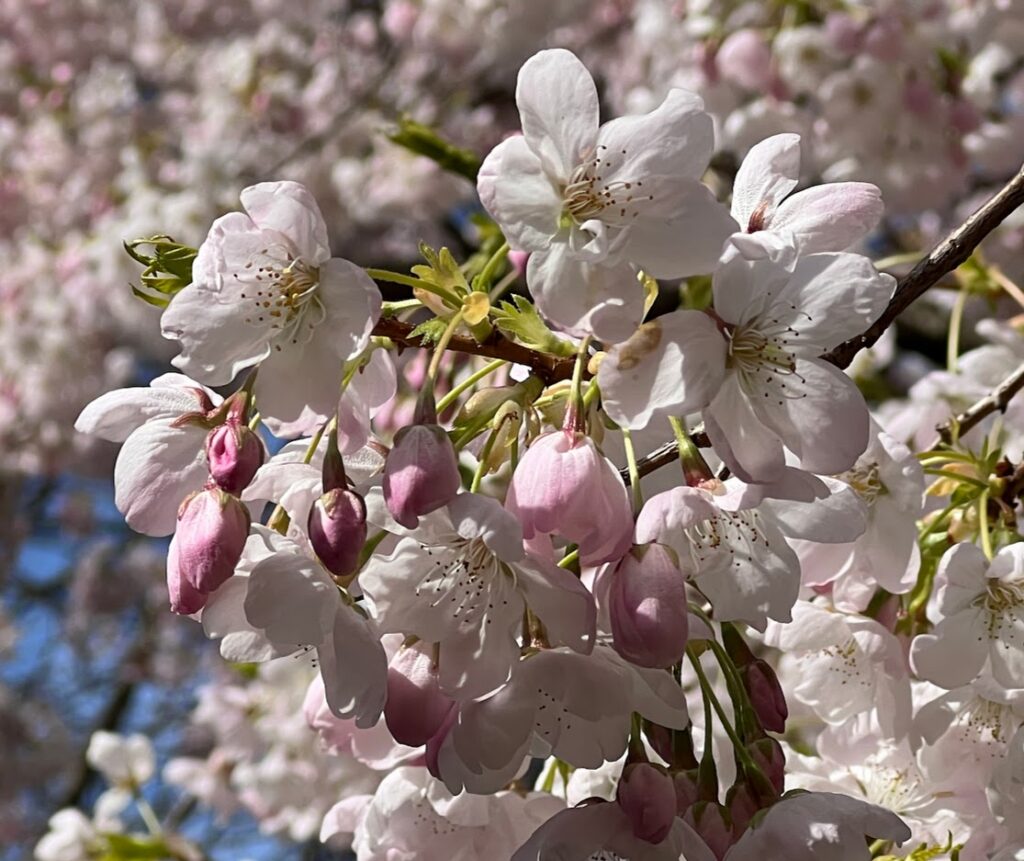
‘Umineko’ or ‘Snow Goose’ are separately named cultivars with the same parents. We’re pretty sure no-one can tell them apart. These trees start upright; the branches eventually spread out but curve back inward at the tips. The flowers are smaller than the cherries shown above, are pure white with petals so round that they overlap to form large stars. Starting now, leaves will appear with the flowers.
